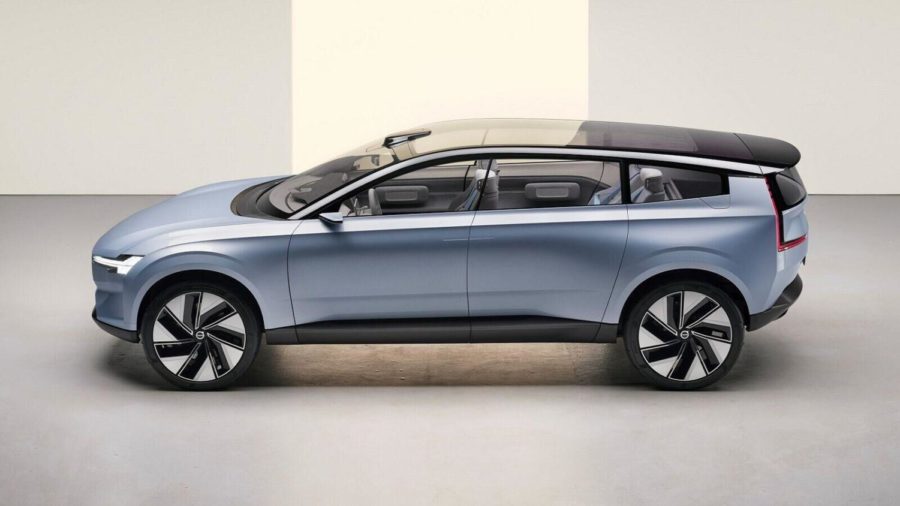Volvo Shares Details of the Concept Recharge
With the Concept Recharge, Volvo Cars demonstrates the steps it will take in all areas of pure electric car development to reduce its cars’ and its overall carbon footprint. (Volvo)
November 17, 2021
Volvo drives a stake in the claim of creating vehicles that not only cut emissions in driving but promote sustainability throughout the entirety of its production and beyond. In so doing, the Swedish automaker further detailed some of the elements of the Concept Recharge, which they first introduced in May.
Volvo claims that lowering greenhouse gas emissions is essential in the production of the vehicle, and the materials chosen to create the Concept Recharge will reduce lifecycle carbon emissions by 80 percent compared to the 2018 Volvo XC 60. In addition, if the electricity used to power the battery is 100-percent renewable, Volvo says the Concept Recharge should have a carbon impact of under 10 tons.
The Concept Recharge not only showcases its future design elements but also demonstrates the use of innovative materials throughout the car. Rather than the usual leather and plastics used for the cabin, you’ll find earth-friendly, recycled, and recyclable materials inside the Concept Recharge. Examples include Swedish wool for the seatbacks and carpets, Tencel cellulose fibers for the seat cushions, and a bio-based material from recycled materials called Nordico, which Volvo Cars created and has a carbon footprint 74 percent lower than cowhide.
Even front and rear bumpers are composed of a flax composite that uses fewer plastics than conventional vehicles. And the Pirelli tires are composed of 94 percent recycled materials and responsibly sourced natural rubber.
The Concept Recharge is Volvo’s first vehicle designed from the outset to be an all-electric vehicle (EV); the XC40 Recharge is an EV retrofit of an existing internal combustion engine-powered crossover. As such, the Concept not only showcases elements of future Volvo design, but it also boasts a lidar unit integrated into the exterior silhouette and a cabin unhampered by traditional drivetrain components, such as an engine or transmission.
Volvo aims to sell only electric vehicles by 2030 and be climate neutral by 2040.


















































































































































